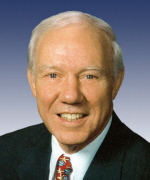How Big is the Incumbency Advantage in Minnesota’s U.S. House Races?
This report is Part 2 in a series on the incumbency advantage in Minnesota politics.

In today’s report, Smart Politics paints with a broader brush to examine to what extent Minnesota incumbents have succeeded in defending their U.S. House seats by the number of terms they have served in office.
An analysis was conducted of Minnesota’s 568 general and special election contests since statehood:
· 426 incumbents have won their general election matchups, while 61 have been defeated.
· An additional 14 Representatives have failed to win their party’s nomination.
· Another 57 members of Minnesota’s U.S. House delegation ended up not running for a subsequent term – either due to retirement, deciding to campaign for another office, resignation, or death.
· An additional 10 races did not have incumbents due to reapportionment increasing the number of Gopher State U.S. House delegation members.
Political Fate of Minnesota’s U.S. Representatives, 1857-2008
|
Outcome
|
Number
|
Percent
|
|
Won reelection
|
426
|
75.0
|
|
Lost reelection
|
61
|
10.7
|
|
Did not run*
|
57
|
10.0
|
|
Failed to get party’s nomination
|
14
|
2.5
|
|
(New district)
|
10
|
1.8
|
|
Total
|
568
|
100.0
|
* Indicates U.S. Representatives who did not run for a subsequent term – either due to retirement, resigning from office, choosing to run for another office, or death. Data compiled by Smart Politics.
Of the 487 times Minnesota U.S. Representatives made it back to a general election matchup, they have been victorious 87.5 percent of the time – winning 426 of 487 contests.
Historically, freshman Representatives are among the most vulnerable, winning just 79.7 percent of the time. And this makes intuitive sense: unseasoned incumbents have not had the time to build up the kind of rapport or support among their constituency as more seasoned members of Congress.

As expected, the success rate of incumbents has historically increased the longer Representatives have remained in D.C.:
· Two-term incumbents have won 88.2 percent of their re-election bids, winning 75 contests and losing just 10 times. The Gopher State currently has three members in its sophomore class: Tim Walz (MN-01), Keith Ellison (MN-05), and Michele Bachmann (MN-06).
· Three-term incumbents have won 90.5 percent of the time, winning 57 matchups and losing only 6 times.
· Four-term Representatives have won 92.2 percent of their re-election contests, winning 47 and losing 4 – numbers which ought to make Republican John Kline (MN-02) feel even more confident as he seeks to win a fifth term in 2010.
The historical election data takes a bit of a turn, however at the five-term mark, where U.S. Representatives who have been in Washington, D.C. for a decade to 14 years have not been quite as successful.
· Five-term incumbents have won 90.0 percent of their re-election matchups, winning 36 and losing 4. Back in 1992, DFLer Gerry Sikorski fell to Republican Rod Grams in his failed attempt for a sixth term at the Capitol.
· Six-term incumbents have won 87.5 percent of the time, winning 28 and losing 4. Republican Gil Gutknecht was among these handful of Representatives who lost after a dozen years of service – falling to DFLer Tim Walz in 2006.
· Seven-term incumbents have won 88.0 percent of their contests, winning 22 and losing 3. In 1990, Republican Arlan Stangeland lost his reelection bid in DFLer Collin Peterson’s third attempt to unseat the GOPer in the 7th District.

The data takes another unexpected twist with 10-term Representatives, one of the most (comparatively) vulnerable group of incumbents (a class Peterson falls into today). Those Representatives who have served 20 years in office have the second lowest reelection rate in Gopher State history – at 75 percent.
Nine 10-term Representatives have gone on to win reelection, but three have lost – although all in redistricting years: Republican Walter H. Judd in 1962 (by 3.7 points to DFLer Donald Fraser) and Republicans Andrew Volstead and Halvor Steenerson in 1922 (by 19.4 and 12.6 points respectively).
Overall, 16 of the 62 defeated incumbents have lost during redistricting years (years ending in ‘2’) – at 25.8 percent that is a slightly higher rate than chance.
Incumbents in their 11th, 12th, 13th, 14th, and 15th terms have an unblemished record – winning all 23 reelection bids collectively.

Reelection Rate of Minnesota U.S. Representatives by Terms in Office, 1857-2008
|
Term
|
Won
|
Lost
|
Total
|
Percent
|
|
1
|
94
|
24
|
118
|
79.7
|
|
2
|
75
|
10
|
85
|
88.2
|
|
3
|
57
|
6
|
63
|
90.5
|
|
4
|
47
|
4
|
51
|
92.2
|
|
5
|
36
|
4
|
40
|
90.0
|
|
6
|
28
|
4
|
32
|
87.5
|
|
7
|
22
|
3
|
25
|
88.0
|
|
8
|
19
|
1
|
20
|
95.0
|
|
9
|
14
|
1
|
15
|
93.3
|
|
10
|
9
|
3
|
12
|
75.0
|
|
11
|
7
|
0
|
7
|
100.0
|
|
12
|
5
|
0
|
5
|
100.0
|
|
13
|
5
|
0
|
5
|
100.0
|
|
14
|
3
|
0
|
3
|
100.0
|
|
15
|
3
|
0
|
3
|
100.0
|
|
16
|
1
|
1
|
2
|
50.0
|
|
17
|
1
|
0
|
1
|
100.0
|
|
Total
|
426
|
61
|
487
|
87.5
|
Data compiled by Smart Politics.
And how has the incumbency advantage played out over the decades in Minnesota? Are incumbents safer today than in the past? Check back tomorrow for Smart Politics’ third report in the series, focusing on the incumbency reelection rate by census period.
Follow Smart Politics on Twitter.
